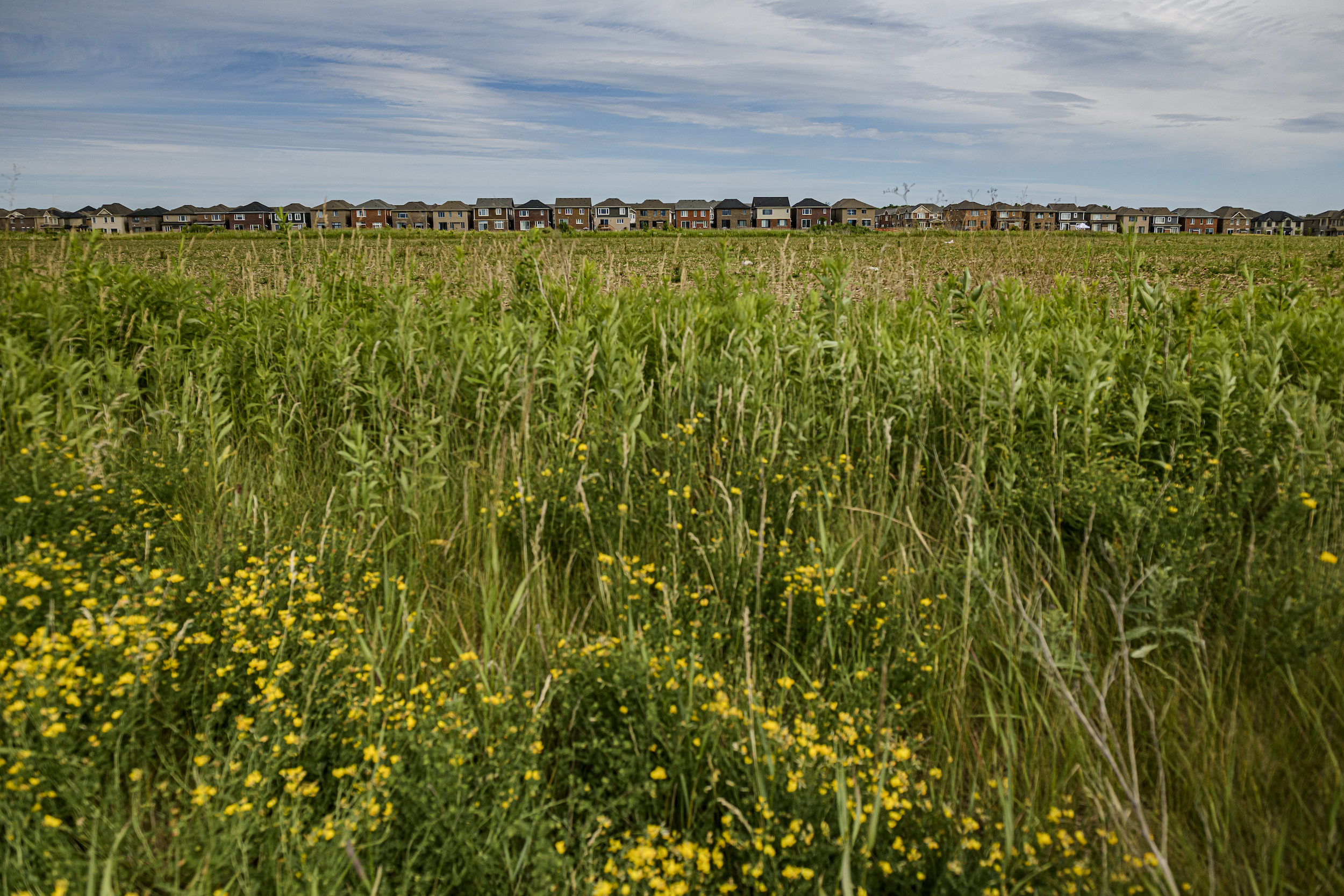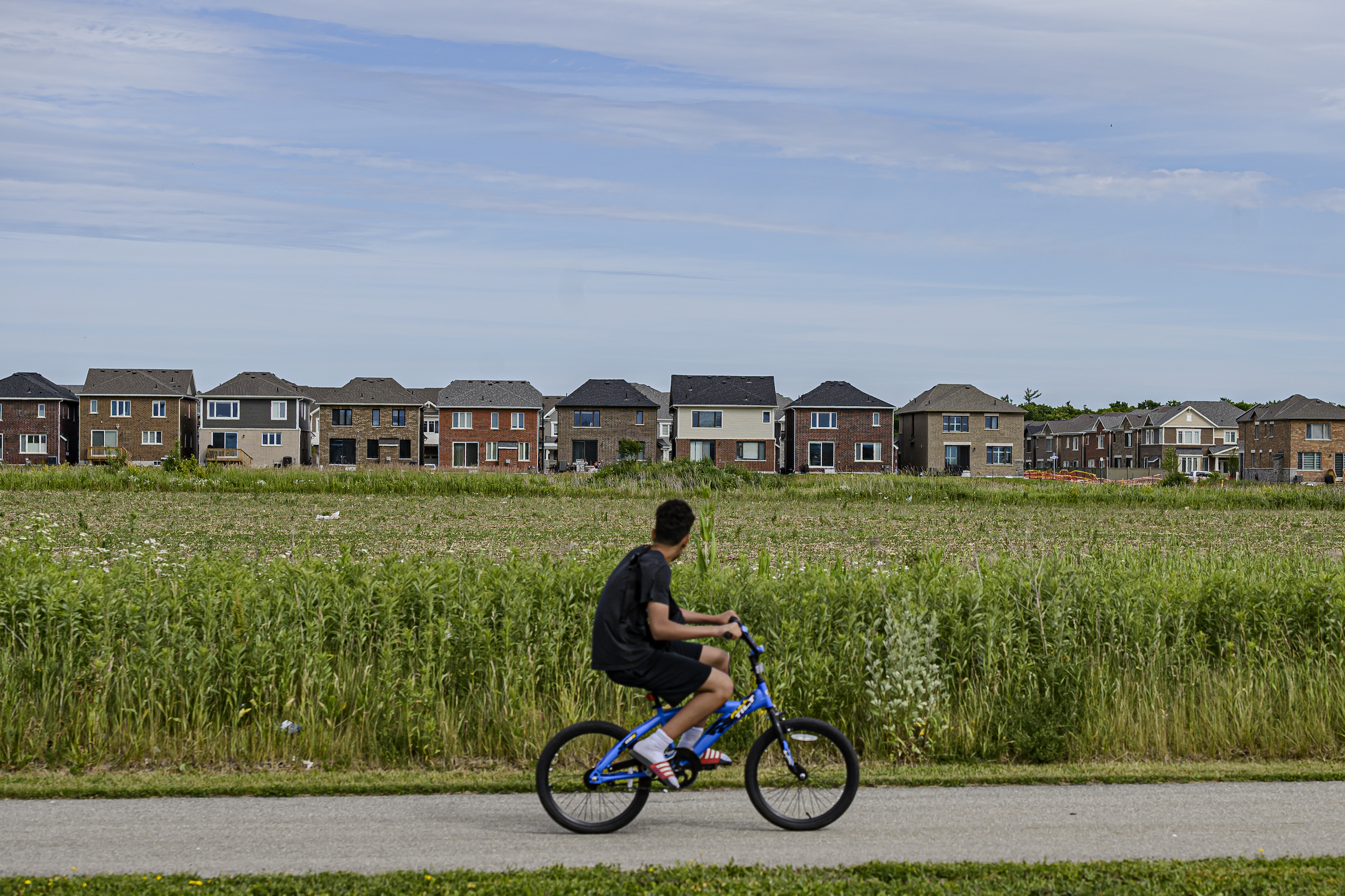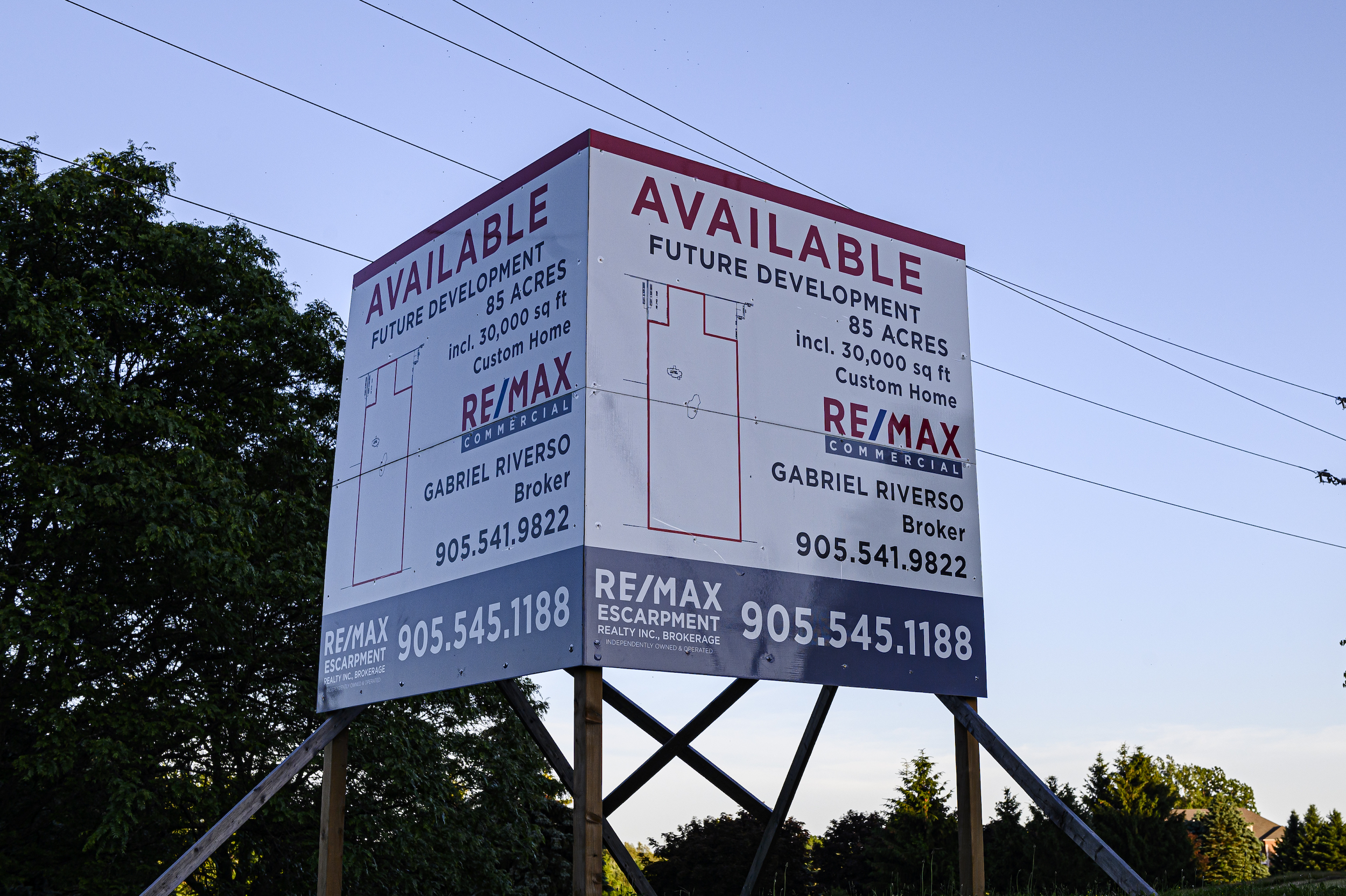
Court halts tailings increase as First Nation challenges B.C.’s decision to greenlight it
Court sides with Xatśūll First Nation, temporarily halting Mount Polley mine waste expansion
Speaking to a lunchtime audience at the Toronto Region Board of Trade on Tuesday, Premier Doug Ford pitched a new plan he said would help tackle Ontario’s housing crisis.
“It will make it easier to build the right type of housing in the right places,” he told industry stakeholders, with a grin.
But Ford didn’t say his plan depends in part on a massive gutting of conservation authorities, which oversee and protect vital and deteriorating watersheds.
To understand the scope of the Ford government’s changes, The Narwhal sat in on a media briefing and read the proposed legislation. It also reviewed an internal government document, which was shared with some stakeholders Tuesday before being leaked to The Narwhal. Although the government did not respond to a number of questions from The Narwhal about the internal document, it released its legislation late on Tuesday afternoon, confirming a number of key revelations about Ford’s actual plan.
The legislation will repeal 36 specific regulations that allow conservation authorities to directly oversee the development process. If passed, it would mean Ontario’s conservation authorities will no longer be able to consider “pollution” and “conservation of land” when weighing whether they will allow development.
The government is also seeking to force the agencies to issue permits for projects that are subject to a “Community Infrastructure and Housing Accelerator,” a new tool that allows the province to expedite zoning changes. It will limit authorities’ ability to weigh in on developments to issues of “natural hazards.”
The changes are aimed at reducing the “financial burden on developers and landowners making development-related applications and seeking permits” from conservation authorities, the leaked document says.
The Ford government repeatedly denied Tuesday that the role of conservation authorities was being diminished. Yet under the new proposed rules, conservation authorities would also be compelled to identify and give up any land they hold that could be “suitable for housing.”
Ontario’s planning system has many players: the provincial government, 444 regional and local municipalities and 36 conservation authorities. Of these, the ones most directly tasked with looking out for animals, land and environment during the planning process are conservation authorities. And today, for a second time since taking office, the Ford government seems to have taken direct aim at them — and so, the environment — with some key legislative changes.
Here’s a breakdown of how it all works now, what the Ford government is changing and what the environmental repercussions could be.

Conservation authorities are local agencies that manage watersheds. They’re unique to Ontario, and deeply rooted in its history.
They were actually created under a Progressive Conservative government, led by Premier George Drew, in 1946. At the time, habitat degradation by settlers was starting to take a toll. Much of it was due to deforestation: the roots of trees anchor soil and without plant cover that soil can quickly erode and dry out. Deforested areas are also more prone to flooding. Environmental groups and the province wanted to address those problems not just on the city level, but by looking at watersheds as a whole, and so conservation authorities were formed.
Then came Hurricane Hazel in 1954, which washed away homes that had been built on floodplains and killed 81 Ontarians. The province expanded conservation authorities’ power, tasking them with monitoring waterways for potential floods, in hopes of preventing a similar tragedy in the future. They were also given the ability to acquire land for conservation and recreation — and to regulate development near waterways, on Great Lakes shorelines and by the inland lakes and wetlands connected to watersheds they oversee.
Today, the province has 36 conservation authorities, and all but five are in heavily-developed southern Ontario. Though their duties are set out in provincial regulations, they’re more closely intertwined with municipal governments, which contribute a significant chunk of their funding and appoint members — usually municipal councillors — to each agency’s board of directors.
Ironically, the government’s internal document about the latest changes acknowledges the positive impact of conservation authorities, noting that “the federal Parliamentary Budget Office has credited Ontario’s floodplain and hazard management policies and programs, including the role of [conservation authorities], with keeping losses associated with flooding in Ontario lower than losses seen in other Canadian provinces.”

Conservation authorities in Ontario serve as bridges between various parts of the development planning process and the players involved.
“Conservation authorities try to connect the dots in a very complicated land-use planning process,” former Toronto Region Conservation Authority head Brian Denney told The Narwhal. The authorities help municipalities navigate dozens of policies and legislative instructions, making sure the puzzle pieces fit together around watershed protection goals. They work to prevent severe impacts on the watershed that could harm human health or biodiversity across the province.
“But conservation authorities are always respectful of the fact that land-use planning is the realm of municipalities with overall direction from the province,” Denney said.
One key part of what conservation authorities do is oversee natural heritage systems — sections of land that allow plants and animals to move from one area to another. That’s especially important as the climate crisis escalates: not only are migration paths disappearing, but more species are moving north into Ontario and beyond, needing safe corridors. Tuesday’s legislation mentions changes to natural heritage systems, but doesn’t provide details.
“We used to sort of isolate, protect patches of landscape,” said Victor Doyle, a former provincial planner credited as one of the architects of the protected Greenbelt. “But if they’re not connected, then plants and animals can’t survive. They inbreed and they die out. They need to be connected.”
There are different layers of natural heritage systems: some are laid out in provincial legislation, like the one that created the Greenbelt, or defined by municipalities, Doyle said. Each conservation authority also has a natural heritage system, Doyle added, scooping up smaller wetlands, woodlands and other natural features important to watersheds that aren’t protected in the high-level provincial system.
Doyle thinks of natural heritage systems as parts of the same body: if the provincial ones are torsos and biceps, municipal and conservation authority ones are like hands and fingers. “The little ones won’t survive without the big ones, and the big ones won’t survive without the little ones,” he added.
Over the years, natural heritage systems have been a tension point when developers apply to open up land that isn’t eligible for urban development, Doyle said. In some cases, these applications end up at backlogged tribunals.
“A lot of this time is taken up because developers are pushing the envelope so hard to push the natural heritage system back,” Doyle said.

A lot.
Taken as a whole, the plan is aimed at not just increasing development, but density — something that could be positive, as sprawling car-reliant suburbs tend to eat up farmland and produce air pollution and carbon emissions. But it also attempts to water down or completely eradicate various environmental checks and balances on development.
One official who has seen the document leaked to The Narwhal said the government is proposing “a lot of loopholes to make the system work for developers.” The document outlines the broad strokes of proposals, but provides little detail.
For one, Minister of Natural Resources Graydon Smith told reporters Tuesday that conservation authorities are “the second largest land owner after the Crown” and have been asked to “evaluate” their land to identify areas of development. But Smith was vague beyond that, assuring that conservation authorities “would still play the role they were born to play, which is [to] protect property from flooding and natural hazards, areas where potential erosion can take place.”
Smith also said the province doesn’t know how much conservation authority-owned land could actually be suitable for development. “But we all need to be making sure we’re doing our part to achieve this goal of building more homes,” Smith told reporters.
Other changes outlined in the document obtained by The Narwhal include limiting conservation authorities’ comments to specific aspects of developments, like natural hazards or the protection of drinking water. Some of their permitting abilities will be downloaded to municipalities.
There is also an unspecified proposal to “amend and streamline” the way wetlands are evaluated for development — in the technical briefing, a government official said changes would be aimed at offsetting development pressure on wetlands and reverse Ontario’s decades-long trend of wetland loss.
The legislation cuts the time citizens and companies have to appeal conservation authorities’ decisions to deny permits from 120 days to 90. It freezes the fees that developers pay conservation authorities when applying for permits.
The government is also giving itself more power: it will now be allowed to review and change any conditions that a conservation authority might place on a permit.
The goal, according to the leaked document, is to create “consistent and easy-to-understand rules [that] will assist the development sector in providing new housing and will also benefit agricultural producers and existing homeowners who want to do work on their properties as well as provide clear direction to conservation authorities.”

The short answer: not to the extent many people think.
Ontario’s conservation authorities largely play an advisory role in the municipal planning process. This role has two main tasks.
The first is indeed regulatory, reviewing development applications and granting permits to proposals that meet requirements to build safely and sustainably near or in wetlands, floodplains and other natural hazard zones. Each application comes at a cost to developers and requires complicated paperwork and engaging in extensive back and forth.
“So when the government tells us to get back to their core mandate, it’s just another way of saying, from a developer’s perspective, that they want conservation authorities to get out of the way,” Denney said.
The second is to offer technical expertise and advice to municipalities on projects proposed near natural heritage systems or other ecological habitats, or which require stormwater infrastructure installation or upgrades.
“Conservation Authorities can be an easy scapegoat [for governments] because it’s an extra layer, an extra body, an extra approval that’s required before shovels can go into the ground,” said Kellie McCormack, Conservation Halton’s director of planning and regulations, said. “But we’re here to make sure that development is done in a sustainable manner, and that there’s no risk to life and property. We’re not out to stop development.”
The important thing to remember is that not every development application is reviewed by a conservation authority, explains McCormack. Much of the time, it’s after a request from municipalities that don’t have their own ecologists, engineers, water researchers or environmental planners on staff.
Conservation Halton, for example, has an agreement with the Region of Halton to provide ecological review for planning applications, said McCormack. She said conservation authorities are able to look at development “from a much higher world view, beyond municipal borders” to ensure development doesn’t disrupt the whole natural system of a provincial region.
The climate crisis makes that role more crucial: also on Tuesday, the Insurance Bureau of Canada put out a press release stating the “urgent need” for the housing industry and governments to more openly consider and disclose “natural hazard and climate risk … because of the increasing frequency and severity of natural disasters.”
Without “immediate action … catastrophic loss to homes and communities will continue to increase in severity and cost, year after year,” the bureau’s vice-president, climate change and federal issues, Craig Stewart, was quoted as saying.
In the end, conservation authorities don’t make final decisions about development; that’s up to municipalities.
“The role of conservation authorities is to try and make sure houses aren’t going to be swept away in a flood or fall over the Scarborough Bluffs,” Denney said. “It’s an important part of the process.”
Get the inside scoop on The Narwhal’s environment and climate reporting by signing up for our free newsletter. On a warm September evening nearly 15...
Continue reading
Court sides with Xatśūll First Nation, temporarily halting Mount Polley mine waste expansion

Break out the champagne: Emma’s storied life and leadership in journalism has earned her the...

How can we limit damage from disasters like the 2024 Toronto floods? In this explainer...
